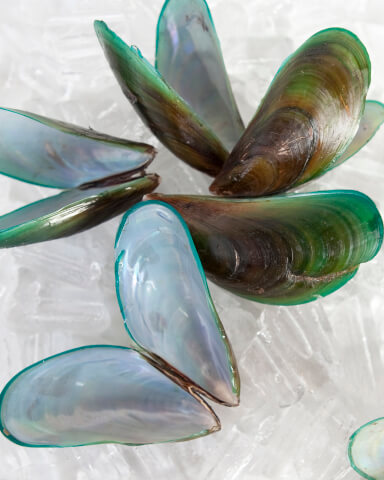Omega 3 fatty acids: In which foods?
Omega 3 fatty acids are essential for health.
The body needs certain foods to absorb the omega 3 fatty acids
into the body’s own cell membranes.
Some foods provide a particularly high proportion of
Omega 3 fatty acids.
You can do without many things in life – but why should you ignore the advice of scientists who consider omega 3 fatty acids (polyunsaturated fatty acids) to be essential for eye and brain health. Omega 3 fatty acids are absorbed through food and are incorporated by the body into the membranes of the cells, making them more flexible and thus helping, for example, blood circulation.
There are eleven different types of Omega 3 fatty acids. The three most important ones are alpha-linoleic acid (ALA), eicosapentaenoic acid (EPA) and docosahexaenoic acid (DHA). While ALA is mainly derived from plant foods, EPA and DHA are mainly found in animal foods – the highest proportion is found in fish.
These foods contain a particularly high proportion of the respective omega 3 fatty acids:
ALA – TOP FIVE
RAPESEED OIL AND SOYBEAN OIL
LINSEED AND LINSEED OIL
WALNUT OIL AND WALNUTS
PINICLE CORE
PEANOUSES
EPA AND DHA – TOP FIVE
Fat-rich cold water fish are an excellent source of EPA and DHA. In order to survive in very cold waters, these fish themselves absorb large amounts of omega 3 fatty acids, for example through microalgae and small crustaceans. This explains the following top rankings:
SARDINES
HERINGE
WILD SALMON
MAKRELE
TUNNISH
The colder the water, the higher the proportion of Omega 3 fatty acids. You should therefore take a bold approach to oysters from cold waters. They are also always a good reason for an accompanying glass of champagne or Sancerre. If you prefer mussels, clams with spaghetti may be your favourite, with which you can optimally combine good nutrition and the delicious pleasure of Italian cuisine.
SPAGHETTI ALLE VONGOLE – HEALTHY ENJOYMENT, SIMPLY HOMEMADE
Spaghetti alle Vongole can also be prepared quickly and easily at home: It’s best to start by putting the cooking water for the spaghetti on the stove, because with the mussels it should go quickly later. Water the clams and brush them if necessary, if they have not been pre-cleaned. Throw away any clams that have already been opened. Heat a few tablespoons of olive oil and some butter and sauté finely chopped onions and a little chopped leek in it. Deglaze with white wine, add some vegetable stock and boil up briefly. Add the mussels to this already deliciously fragrant mixture, place the lid on the pot and shake the pot a little while – within 3-4 minutes the mussels will burst open in the hot steam that prevails in the head pot. You should not eat mussels that have not opened, but sort them out. Mix the hot spaghetti with 2-3 tablespoons of the pasta water, finely chopped garlic and flat-leaf parsley and the clams. Ready. Of course, the coal hydrate requirement is covered with this; however, with fresh Italian white bread, the brew can be deliciously absorbed in the plates and thus extend the pleasure a little longer.
Low-fat fish provide less omega 3 fatty acids, but have the advantage of providing fewer calories:
CABBLEFOOT
HELLFISH
TROUTS
Beef and milk also contain omega 3 fatty acids, but far less than fish.
Omega 3 fatty acids are therefore a good reason to stop by your favourite Italian restaurant. And if New Zealand is on your travel list, you should definitely try the green scallops there and think of GloriousMe .




